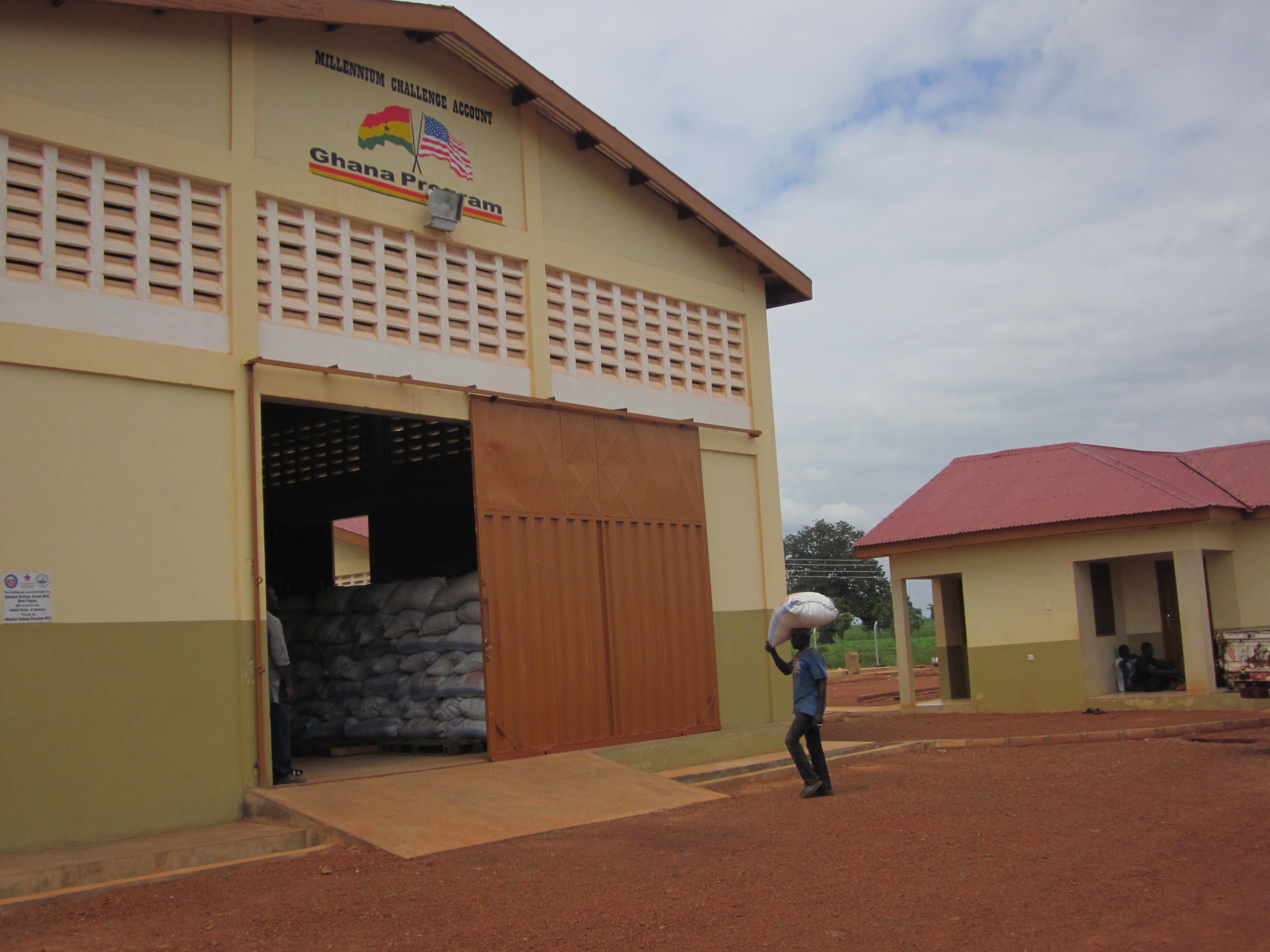
How do you ensure the sustainability of a post-harvest investment after a donor project ends? And how do you incentivize private sector investment without providing giveaways that risk being underutilized or benefiting businesses that are financially better off?
When post-harvest losses were identified as a major cause of inefficiency in Ghana’s agriculture sector, MCC struggled with how to make investments to reverse these losses sustainable and private-sector driven while simultaneously benefiting poor smallholder farmers. One answer involved constructing 10 agribusiness centers throughout the country as part of the country’s five year, $547 million MCC compact. The agribusiness centers have the objective of reducing post-harvest losses by offering processing, drying, storage, and marketing services for staple crops.
Each agribusiness center is jointly owned by a private sector investor (with a 70 percent share) and an agriculture cooperative of about 1,000 smallholder farmers (30 percent share). In exchange for its share, the private investor was required to contribute the land on which the facility was built and about $35,000 in start-up working capital, as well as business plan, documented financial and management capacity and market connections. Each farmer shareholder was required to contribute a 100-pound bag of grain as a membership fee. MCC funds covered the building and basic equipment of the centers and legal support to formally establish the new companies as well as capacity building for the farmer cooperatives. In this way, both the investor and the farmers had a stake in the profitable operation and maintenance of the facility.
Selecting individual investors, selecting and building the capacity of farmer-based organizations (FBOs) and training shareholder members on what it means to hold a share of a business were the most challenging parts of the project. Building trust between the farmers and their FBOs—as well as between the FBOs and individual investors—took time.
The legal technicalities of setting up these ownership arrangements, which were unprecedented in Ghana, required significant legal resources. And to select which businesses would receive the assistance, the Millennium Development Authority of Ghana (the local organization implementing the compact) evaluated proposals from 30 businesses who competed for the 10 partnership opportunities.
Some of the challenges included determining which businesses were most capable of sustaining operations and which private sector investors had the greatest potential of partnering with smallholder farmers. Additionally, assessing which locations made sense as aggregation centers, based on the availability of infrastructure and access to markets, was challenging. The end result is a set of agribusiness centers that will be able to reduce post-harvest losses by 20-30 percent.
Share your experiences! Have you worked on a project that facilitated partnerships between investors and smallholder farmers? How have other projects addressed the problems of losses and under-investment in post-harvest infrastructure? How have projects attracted investors to work with smallholder farmers in various parts of the value chain?
Click here to read the full article.

